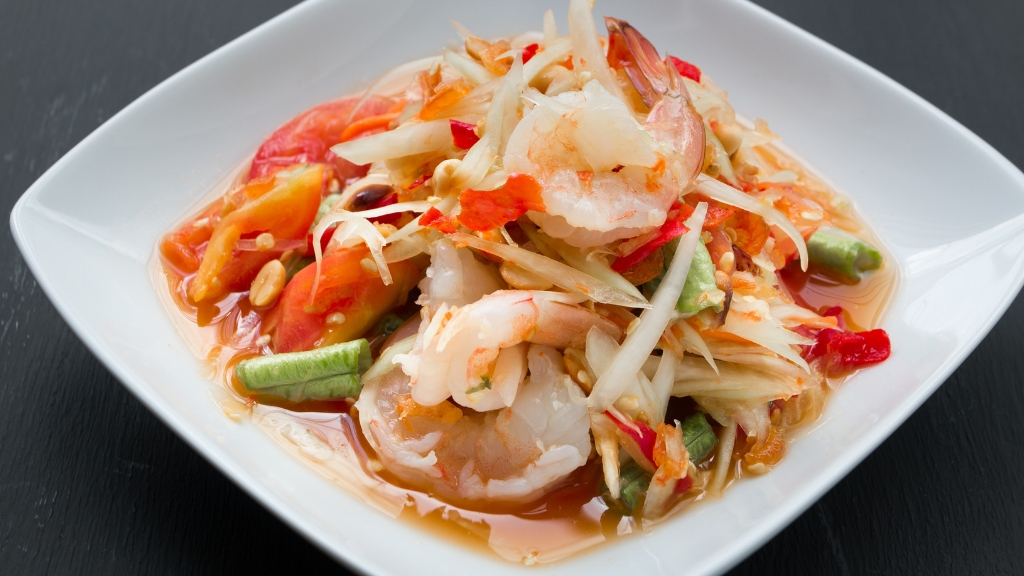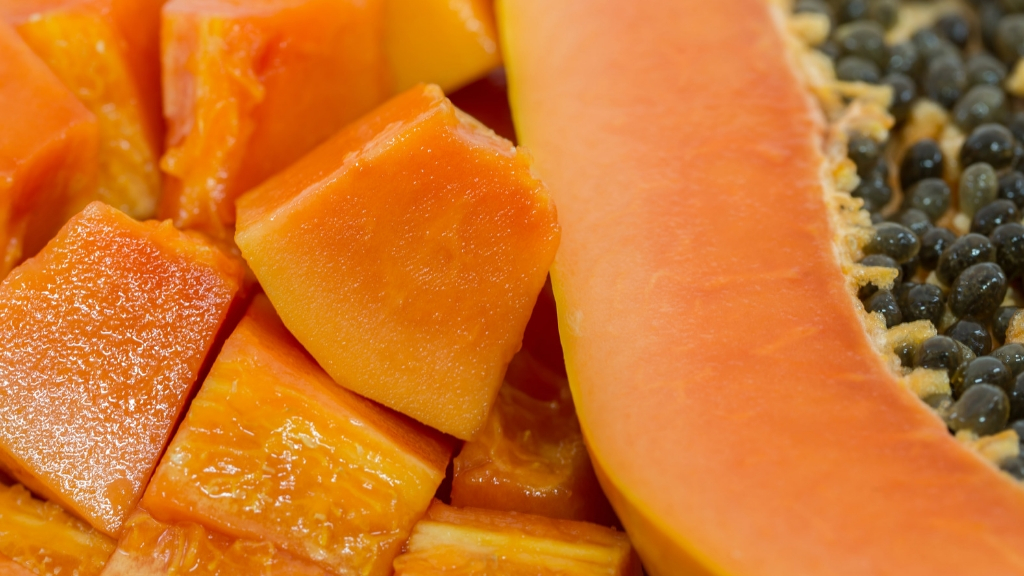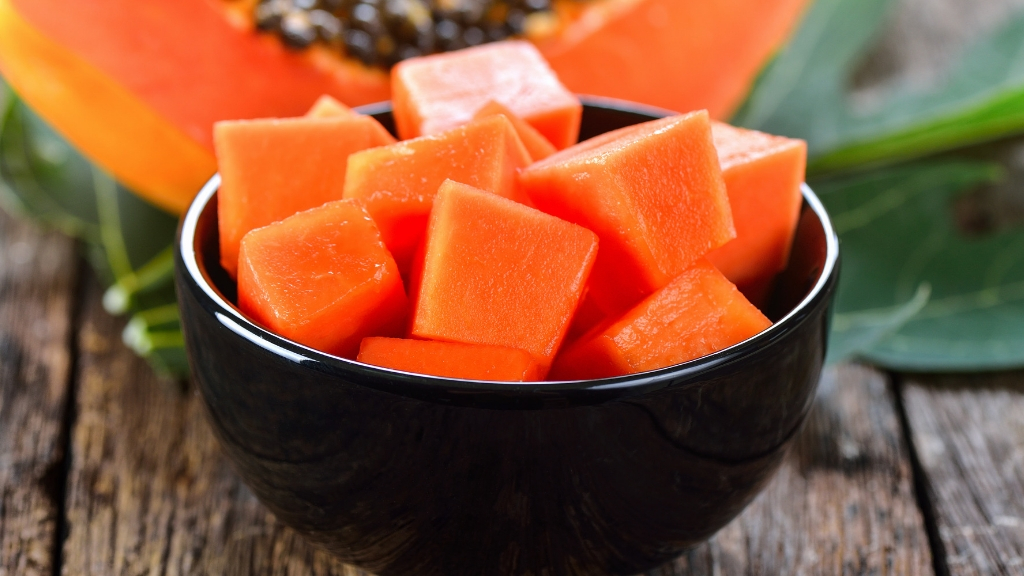Can Papaya Reduce Risk of Diabetes or Maybe Help Prevent It Entirely?
7 minute read
Whether diabetes runs in your family or you’re merely worried about the increasing number of those diagnosed with diabetes, you might want to look to papaya for some help warding off this disease.
The tropical papaya was once considered very exotic and rare. Fortunately, it is now available in most cities year-round. Not only does this mean you’ve got a tasty treat waiting right around the corner, but one that’s also packed with nutritional and health benefits.
Nutritional Content of Papaya
The papaya is sweet with some musky undertones. When ripe, it has a soft, buttery consistency. The papaya isn’t a small fruit, it can sometimes reach up to 20 inches, but the ones you’ll typically find in a supermarket are around 7 inches long and weight about a pound.
The skin of a papaya can range from green to a greenish yellow to orange. The interior is typically a bright orange with some yellow or pink tones. Inside you’ll find little black seeds, which are edible, but some people do not like their bitter, peppery taste.
A medium-sized papaya has about 120 calories and is packed with vitamins and minerals your body craves. The nutritional value of papaya is outstanding, and it’s easy to see why it’s becoming a very popular health-food choice. In addition to its taste, of course.

Some of the more noted nutritional value of papaya include:
♦ Vitamin C: at 168.08mg, it’s 224% of your daily recommended intake
♦ Folate: 102.12 mcg
♦ Fiber: 4.69 g
♦ Vitamin A: 101.10 mcg RAE
♦ Magnesium: 57.96 mg
♦ Copper: 0.12 mg
♦ Potassium: 502.32 mg
♦ Pantothenic acid: 0.53 mg
♦ Protein: 2 g
You can also find B vitamins, alpha-carotene, beta carotene, lutein, zeaxanthin, vitamin E, calcium, potassium, vitamin K, and lycopene in papaya. Many of these nutrients have additional benefits, like being an antioxidant or anti-inflammatory.
The real star of the papaya is papain, an enzyme that breaks down proteins and improves digestion. It is also an anti-inflammatory that increases the production of cytokines, which promote healing and improve circulation.
How Papaya Can Reduce Diabetes Risk
When it comes to diabetes, papaya is grabbing attention these days, and there are some good reasons. But before diving into the top reasons to eat papaya if you’re diabetic or you’re worried about diabetes, remember that the best way to eat papaya is in moderation.
A Digestion Aid
As mentioned above, papaya is loaded with vitamins, minerals, soluble fiber, antioxidants, and that all-important papain. These things together make it a useful fruit for people with digestive issues and problems processing foods, even foods that include sugar.

Nutrition-Packed Substitute for Sweets
Speaking of sugar, there is a myth that the sugars in fruits are bad for diabetics. There is some truth to this, as too much sugar from fruit can cause insulin levels to spin out of control. But when eaten in moderation, diabetics should consider eating papaya for its health benefits.
High Vitamin C Content
Another way that the papaya helps protect people with diabetes is its high vitamin C content. This boost to the immune system helps the body fight off illnesses that can be more dangerous for a diabetic than they would be for a healthy person.
Lots of Soluble Fiber
The high soluble fiber content in papayas makes it a very satisfying food. This is key for people with diabetes, who might have constant cravings. Eating a serving of papaya will give you the sensation of being fuller for longer periods of time.
Papaya Supports Heart Health
One concern that diabetics have is circulation and cardiovascular health. Papaya can reduce your levels of triglycerides which can in turn help prevent cardiovascular disease. Papayas allow your blood to flow more smoothly and efficiently, getting essential nutrients where they need to go.
Part of a Weight Loss Program
Many people with diabetes struggle with weight management as well, especially before the disease has been diagnosed or in the early stages of diagnosis as they’re learning to manage their new diet. The great thing about papaya is it is a great weight loss aid. The low-calorie levels, paired with high fiber makes it an instant colon cleanser, helping move foods through the body and improving digestion along the way.

Fiber Lowers Blood Glucose Levels
Studies have shown that people with type 1 diabetes who are given a high fiber diet have lower blood glucose levels and people with type 2 diabetes could see improvements in blood sugar, lipids, and insulin levels. One small papaya has 3 grams of fiber.
| Related: 6 Tips to Help Make Sure Diabetes Won't Hamper Your Longevity |
Other Health Benefits of the Papaya
With all of the nutrition in papaya, it's no wonder it has so many health benefits that go beyond diabetes. Papayas have proven positive effects for people with the following conditions:
♦ Asthma prevention: beta carotene can lower the risk of developing asthma
♦ Cancer: especially prostate, colon, and rectal cancers
♦ Bone health: bone fractures have been associated with vitamin K deficiency
♦ Digestive issues: papain aids in digestion and papaya is high in water and fiber
♦ Heart disease: fiber, potassium, and other vitamins help cardiovascular health
♦ Inflammation: a significant concern, inflammation is no match for choline in papaya
♦ Healing: used externally, papaya paste can help heal wounds and treat pain

The Bottom Line
Once an exotic treat that you had to travel to experience, papayas have become almost commonplace in today’s supermarket. This is great news for anyone who wants to add healthier foods to their diets yet still enjoy a sweet treat.
Papayas are loaded with nutritional benefits and pack a wallop of vitamin C. They also have anti-inflammatory qualities, antioxidant properties, they’re high in fiber and low in calories. But what makes papayas so unique is the papain enzyme. This important enzyme breaks down proteins, making it great for digestion. It also aids in wound healing and pain relief.
If you have diabetes or you’re worried about getting it, adding papaya to your diet can help you ward off this disease. The soluble fiber of papaya helps you feel full, and it aids in digestion, giving your body a much-needed boost in processing other foods.












